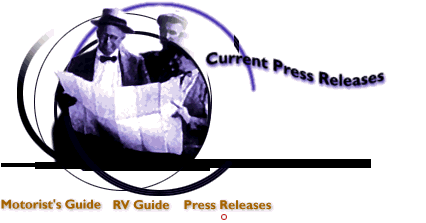
 |
|
One way to stretch your travel budget this summer is to get more miles to the gallon by keeping your tires properly inflated, says the Tire Industry Safety Council. To ensure you're getting the best mileage possible while on the road, the Council advises that you check your tires at least once a month, or about every other time you buy gas. This is particularly important advice for motorists using self-service gas stations where professional vehicle and tire servicing is often limited or not available. "Underinflated tires have higher rolling resistance. This reduces your gas mileage and causes the tires to wear out more quickly than ones which are properly inflated to the vehicle manufacturer's specifications," says Council Chairman Donald B. Shea. "A properly inflated tire can thus improve your fuel economy," Shea says. "In addition to the bonus of extra miles per gallon, properly inflated tires help ensure safety and optimum treadwear." The Council Chairman adds that the proper tire inflation pressure for your vehicle is listed on a placard, located on the glove or fuel compartment door or driver's side doorpost. It is also listed in the vehicle owner's manual. Under normal loads, inflate tires according to the vehicle manufacturer's recommendations, not the maximum pressure listed on the sidewall. You should never exceed this maximum pressure. The correct time to check the air pressure is when tires are "cold" (i.e. driven less than a mile after the car has not been driven for several hours or more). Check the air pressure with your own gauge. Some air pressure towers at service stations are inaccurate because of exposure and abuse. Also don't forget to check the spare tire to ensure that it's properly inflated and ready if it's needed. "While checking the air pressure of your tires, also take a look at the tread. Tires with less than 1/16 of an inch tread depth are considered bald and should be replaced," says Shea. "When you've reached that point, built-in wear bars will begin to show as narrow bands of smooth rubber across the tread at intervals around the tire. These wear bars are the manufacturer's warning that it's time to get new tires."
Shea offers the following additional tips for summer driving:
|